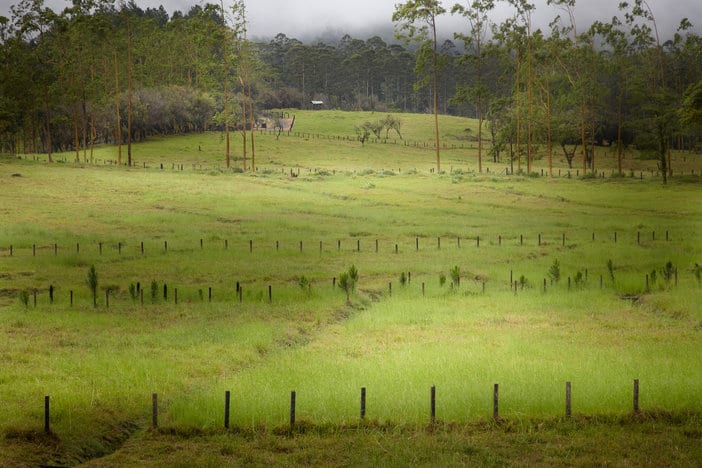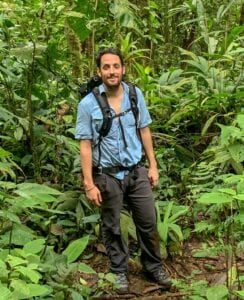Home » Conservation » Freedom to Roam Wild
Freedom to Roam – is the general public’s right to access certain public or privately owned land, lakes, and rivers for recreation and exercise. The right is sometimes called the right of public access to the wilderness or the “right to roam“.

Living organisms and ecosystems are essential for a healthy and productive human life. Providing us with clean air, food, and freshwater, investments in biodiversity are investments in sustainable development. In turn, by maintaining biodiversity and ecosystems, we are retaining the ability of the planet to sustain our prosperity by reducing poverty and increasing economic sustainability.
Unfortunately, biodiversity is in severe decline. So much so that according to the Millennium Ecosystem Assessment (2005), all ecosystems have been transformed by human actions, with the loss of 35% of mangroves, 20% of coral reefs, and around half of tropical forests. In June 2012, the IUCN Red List named 19,817 threatened species(1).
41% amphibians
33% reef-building corals
25% mammals
13% birds
30% conifers
Habitat loss and fragmentation have profound implications for the conservation of flora and fauna throughout the world. Isolation of habitats also influences the status of animal populations and communities in developed landscapes. Therefore, it has been suggested that by minimizing the effects of isolation by enhancing landscape connectivity is one way to counter the damaging effects of fragmentation (2). There is massive value in habitat linkages. The spatial and temporal scales over which animals require connectivity is also an important consideration as pathways are used for movement by animals daily, seasonally, and for migrations. Not to mention, these pathways are key for dispersal and range expansion of species. Studies have suggested that these key linkages enhance the conservation of animal species and communities. Linkages also contribute to ecological functions and improve habitat for plants and animals in human-dominated environments.
As the global population increases, less and less of the earth’s surface remains free from human interference. Most landscape mosaic patterns comprise of human settlements, farmland, and few natural ecosystems. We need to evaluate the role of landscape connectivity in the conservation of biota in terms of the effects of fragmentation on wildlife populations and communities. Specifically, we will be focusing on the implications that fences have on isolation for species and communities.
Obstruction of migratory pathways can be expected to result in negative impacts. As shown in a study looking at the conservation of the pronghorn, it was suggested that without appropriate land-use planning and management, the continuing eroding habitat will alter the suitability of movement corridors and key linkage zones that supports the movements of the pronghorn between seasonal ranges (3). Therefore, it is necessary for conservation plans to focus on maintaining the ecological coherence of landscapes (4).
Another key example of the importance of connectivity was highlighted in a study in Costa Rica. Costa Rica is a perfect example of the lack of healthy forests left. In the 1990s Costa Rica had one of the worst deforestation rates in the entire world. Only 26% of the country has any sort of tree cover left (5). Since then, the Costa Rican government has impressively implemented conservation strategies in order to protect the little remaining forest. Very slowly, the amount of forest land is increasing year by year.
Unfortunately, this secondary growth of forest that covers much of the land is sparse and fragmented in comparison to the primary forests which were dense in vegetation. This is detrimental to animals such as sloths as they are forced to crawl across the ground to reach other regions which leaves them extremely vulnerable. With abnormally high numbers of baby sloths being born with genetic deformities due to a combination of inbreeding and habitat fragmentation and pesticide exposure from agriculture, the negative impacts on sloths are already evident.
In 2019, the Connected Gardens Project was launched in order to mitigate the impacts of urban development on native wildlife in Costa Rica (6). Their main objective is to generate biological corridors for biodiversity by increasing habitat connectivity and availability within and between private properties and other adjoining forests. This is being done by reforesting altered lands with native trees and the installation of natural and artificial wildlife bridges. They are also working with property developers and real estate companies to conduct free sustainable development surveys, making sure that all new property developments have minimal damage to the environment and native wildlife.
Scientists have reviewed the pros and cons of large scale fences (7) and have concluded that large scale fences have profound effects on wildlife. Although they are constructed for a variety of reasons such as to prevent the spread of disease, protect wildlife for poachers and help manage small populations of threatened species, scientists have argued that they should only be used as a last resort as fences are said to lead to ‘ecological meltdown’. Although fencing is part of the culture of wildlife conservation, fencing profoundly alters the ecosystem and can cause some species to disappear. As an increase of awareness of the damage caused by fencing leads to movements to remove fences instead of building more, fencing is now being seen as a backward step in conservation. As climate change increases, there has been a greater emphasis put on the importance of facilitating wildlife mobility and maintaining landscape connectivity and therefore fencing should be avoided whenever possible.

Founder of Grow Jungles